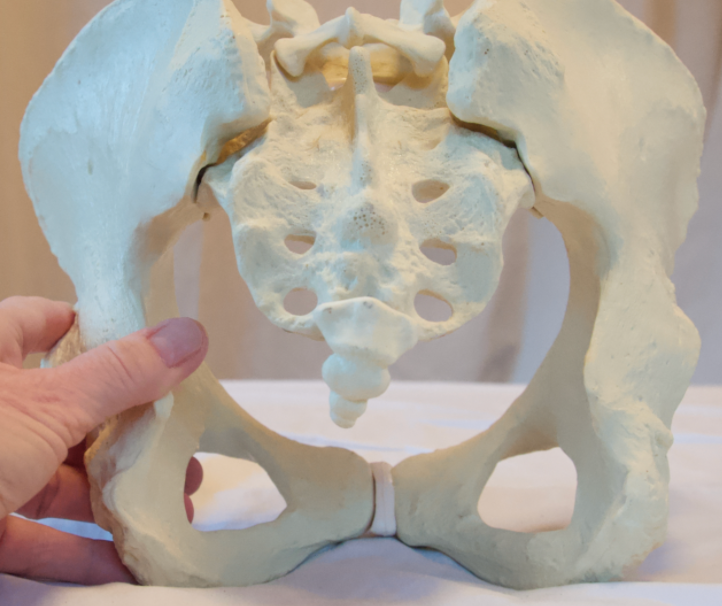
The sacroiliac dysfunction and posterior pelvic pain
The sacroiliac joint is an important and complex region that contributes to a number of musculoskeletal complaints and chronic pain cases I see in my Lane Cove physio office.
In many people, sacroiliac joint dysfunction is the direct cause of lower back pain and has been estimated to be present in between 16-30% of lower back pain cases.[1]
Sacroiliac joint dysfunction was underestimated for a long time and is still the subject of controversial discussion.
Serving as the link between the spine and your lower extremities, the sacroiliac joint is subject to constant stresses and is built for a high level of stability.
Proper functioning of the joints surrounding the pelvis is key
Muscles at the hip, pelvis, and lumbar spine provide indirect motion at the joint while abdominal muscles affect motion at the ilium, pubis, and lumbar spine. The hamstring and gluteals directly affect the position of the ilium. Altered lower extremity and pelvic mechanics can then alter pelvic floor function, and in women, lead to secondary pain and potential incontinence.
- Repetitive or high injury loads can lead to ligamentous, bony, and muscle overuse syndromes.
- Adaptive patterns may occur in the pelvis as a result of spine or lower extremity injuries.
- Asymmetrical force transmission can then lead to dysfunction at the pelvis.[2]
The symptoms of sacroiliac dysfunction are diverse and diagnosis can be difficult to decipher
A good understanding of the anatomy and biomechanics of the hip, pelvis, and lumbar spine and their relationships to each other is essential in devising a bespoke treatment program.
Often, sacroiliac pain presents as a progressive problem with fluctuations in symptoms and when they occur. You may or may not only experience symptoms like these during certain activities:[3]
- Painful gait disturbance
- Groin pain
- Difficulty sitting or restless sitting and changing position frequently
- Difficulty climbing stairs
- Gluteal pain
- Pain radiating into the lower extremities
- Numbness
- Clicking or popping in the posterior pelvis.
- Pain and/or clicking with transitional activities such as getting up from a chair
The causes of sacroiliac dysfunction are just as varied
In addition to specific causes such as trauma, pregnancy, inflammatory arthropathies, degenerative changes in the adjacent joints the natural degenerative changes that take place must be recognised as well. Special consideration must be given to women as many of the many physiological changes that occur over the lifespan of women put them at risk for injury. Structural differences between men and women also need consideration.[4]
Above all, an individualised specific rehabilitation program is helpful.
In the case of recurring complaints, your standard physical therapy interventions include:
- repetitive exercises
- manual joint mobilisation
- manipulation
- bracing
- massage
- patient education
- aerobic conditioning
- general therapeutic exercise
A study used a program of eight exercises for eight weeks to restore normal pelvic position and maintain it during functional movement to stabilise the lumbar-pelvic-femoral complex. The exercises were: [5]
- 90–90 left hemibridge,
- side-lying scissor,
- side-lying knee-to-knee,
- side-lying internal rotation and abduction,
- long setting reverse curl-up,
- basic bridge and adduction,
- abdominal marching and
- pelvic floor exercises.
In general avoiding activities that require single leg stance activities like bowling, skating and running is helpful in alleviating symptoms. Correcting asymmetries in muscle length or stiffness should start as soon as possible and progress within pain-free limits.
Once pain has been controlled and the injured area has been rested, correction of the functional biomechanical deficit and tissue overload complex becomes the focus of rehabilitation.
Your Lane Cove will conduct a thorough history and physical examination to determine the underlying disorders of your pain. That includes a description of symptoms, a series of tests designed to look at the stability, movement, and pain in the sacroiliac joints and surrounding structures.
To make a booking for an assessment or consultation with a sports specialist physio or a women’s health physiotherapist, feel free to contact us on (02) 9428 5772 and we will do our best to answer all your questions and provide you with an appointment time.
[1] Weksler N, Velan GJ, Semionov M et al (2007) The role of sacroiliac joint dysfunction in the genesis of low back pain: the obvious is not always right. Arch Orthop Trauma Surg 127:885-888
[2] Daum WJ (1995) The sacroiliac joint: an underappreciated pain generator. Am J Orthop 24:475-478
[3] Foley BS, Buschbacher RM (2006) Sacroiliac joint pain: anatomy, biomechanics, diagnosis, and treatment. Am J Phys Med Rehab 85:997-1006
[4] Palsson TS, Gibson W, Darlow B et al (2019) Changing the narrative in diagnosis and management of pain in the sacroiliac joint area. physical therapy
[5] Boyle KL. Managing a female patient with left low back pain and sacroiliac joint pain with therapeutic exercise: a case report. Physiother Can. 2011 Spring;63(2):154-63. doi: 10.3138/ptc.2009-37. Epub 2011 Apr 13. PMID: 22379254; PMCID: PMC3076916.



